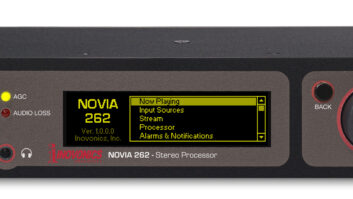
Kohler Generator Automatic Transfer Switch Controller Broadcasters are well familiar with the Federal Communications Commission, which licenses and governs radio and television stations. The Federal Aviation Administration regulates location and maximum height of towers. Local zoning, building, electrical and fire codes govern new construction or modification of existing structures. The Occupational Safety and Health Administration has regulations that govern safety in the workplace, and the Americans With Disabilities Act protects the rights of the handicapped and disabled.
But broadcasters may be surprised to learn that in some states, particularly those with heavily populated areas where diesel standby and peaking generator sets are often deployed, environmental agencies may have regulations prohibiting use of diesel generators, including exercise or maintenance testing, on days where high ozone levels are forecasted.
Here in Connecticut, for example, the Bureau of Air Management, a branch of the Connecticut Department of Energy and Environmental Protection, uses an ozone forecast to determine whether certain operating restrictions apply for the forecasted day. Restrictions are aimed at lowering emissions of nitrogen oxides (NOx), which contribute to the development of ozone on high ozone days. Owners of what the bureau classifies as “emergency engines” (diesel-powered generators) use the ozone forecast to determine whether they can operate for routine, scheduled testing or maintenance. Such operations are restricted on days forecasted to have ozone air quality index (AQI) levels classified as unhealthy for sensitive groups (USG) or worse levels anywhere in Connecticut.
The issue was brought to light in Connecticut when a state DEEP inspector made a surprise inspection at radio station transmitter site.
After the chief engineer contacted the Connecticut Broadcasters Association to share his experience, a small working group within the CBA was assembled to look at the regulation. It found that the criteria determining which generators fell in the regulated group tended to include those in the size and age range of many radio and TV stations in the state.
AUTOMATIC
While some generators are tested with engineering or maintenance personnel present, other stations conduct automated testing. Typical station transfer panels include options allowing programming day of the week and time to exercise the generator, either load or no load. These automated testing routines could easily result in situations where testing lands on an Ozone Alert day, violating the regulations.
Further, some broadcast facilities, depending on the severity of approaching storms and operational demands will start and transfer to stable generator power to “ride out” severe electrical storms, thereby reducing possibility of equipment damage and program disruptions.
Connecticut Broadcasters Association President and former Chairman of the Board Michael C. Rice understands the importance of readiness in time of emergency.

Kohler Generator Remote Annunciator Panel Power outages may be caused by natural and/or manmade events, and a broadcast facility must have reliable power at all times. Ensuring that a generator is capable of delivering full power involves routine testing and the broadcaster has no control over which days are designated for high ozone alert.
“Once this matter was brought to our attention, I contacted General Counsel Eric Kemmler to devise a plan of action,” said Rice. “The CBA worked with legislators, lobbyists and officials from DEEP representing the needs of its member stations over a one year period to draft a waiver of the regulation. Essentially, it places broadcasters in the same exclusion category as hospitals and nuclear power plants.”
GREATER GOOD
In the end, broadcasters made a compelling argument: that the greater good would be served by allowing an exemption for broadcasters, due to their public service role.
They said the time when broadcast radio and TV can be of the most benefit to the public can often coincide with air quality alert days because they are likely to precede a storm front containing severe weather.
The working group said this is the worst time to restrict the ability of a broadcast facility to mitigate damage to its transmission equipment by prohibiting anticipatory generator operation to get off the power grid in advance of electrical storms, or for testing/repair.
A key element of the process was quantifying the contribution of NOx from all the broadcasters’ generators throughout the state. After surveys and calculations, engineers at DEEP were able to see that the total contribution by broadcasters as a specific group was actually very small.
The CBA’s position is that government officials rely on broadcasters to disseminate critical information in times of emergency and to operate the Emergency Alert System. If there is a power outage, broadcasters count on their generators to be fully operational on demand. Routine exercise is an essential component of ongoing maintenance and monitoring.
Since precedent now exists for waiver of the regulation specific to broadcasters, the experience in Connecticut may be helpful in other states where similar regulations may be on the books.
Broadcasters may wish to engage their state associations or counsel for assistance in determining if their facilities fall into a regulated group.
Tom Osenkowsky is a radio engineering consultant in Brookfield, Conn., and a longtime RW contributor. He has been in the radio broadcast industry since 1975.
Comment on this or any story. Email [email protected] with “Letter to the Editor” in the subject field.












